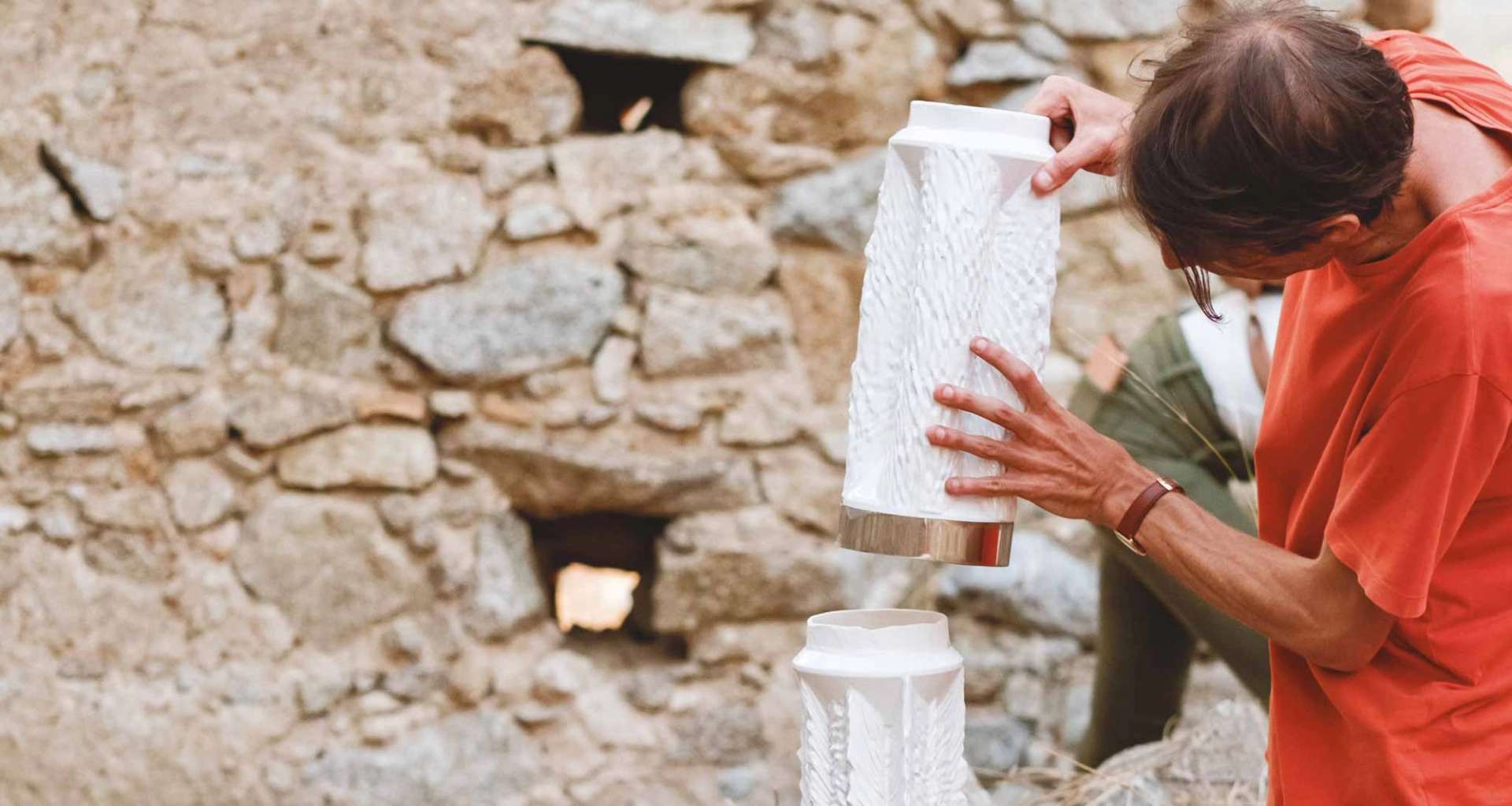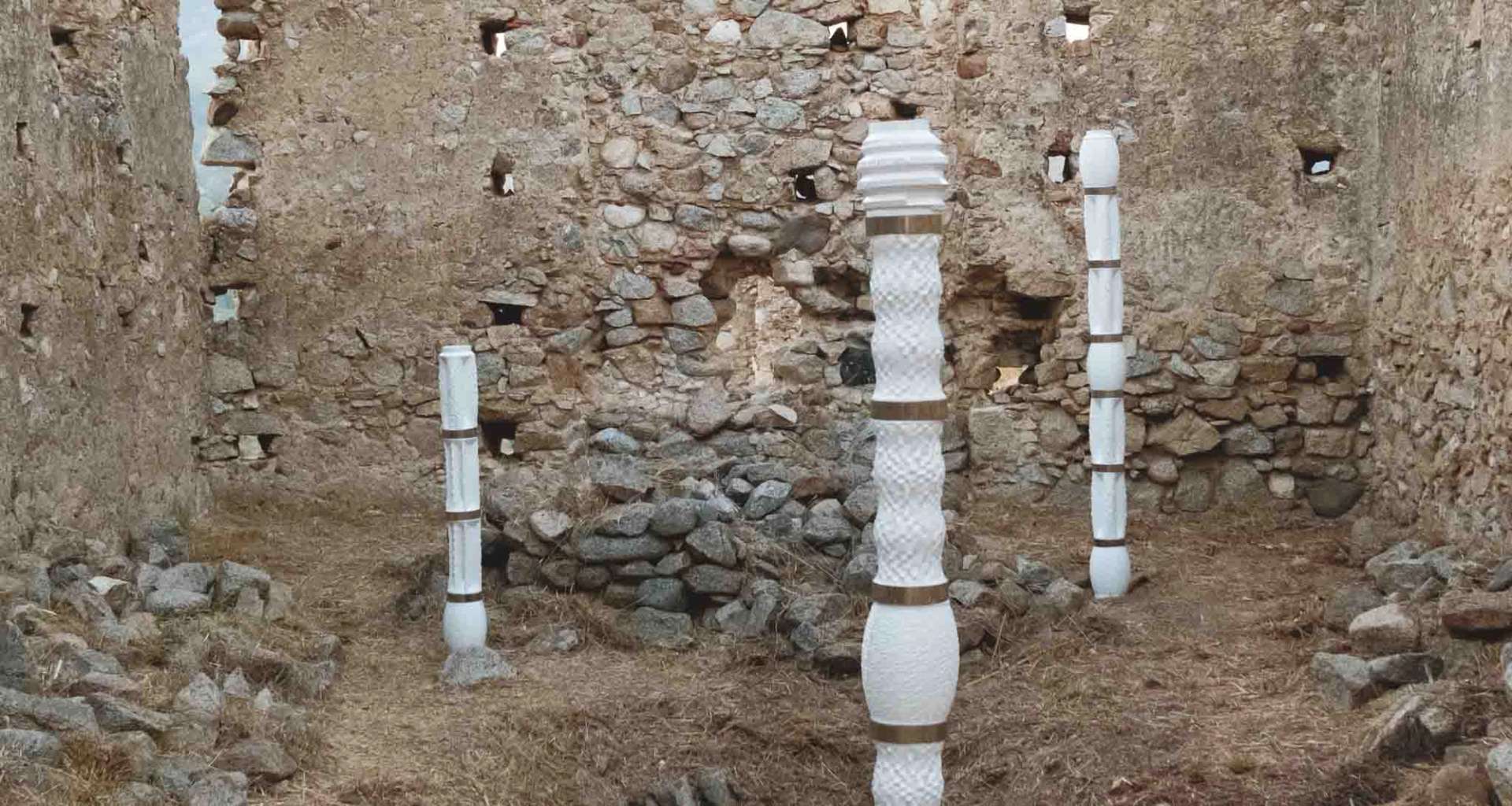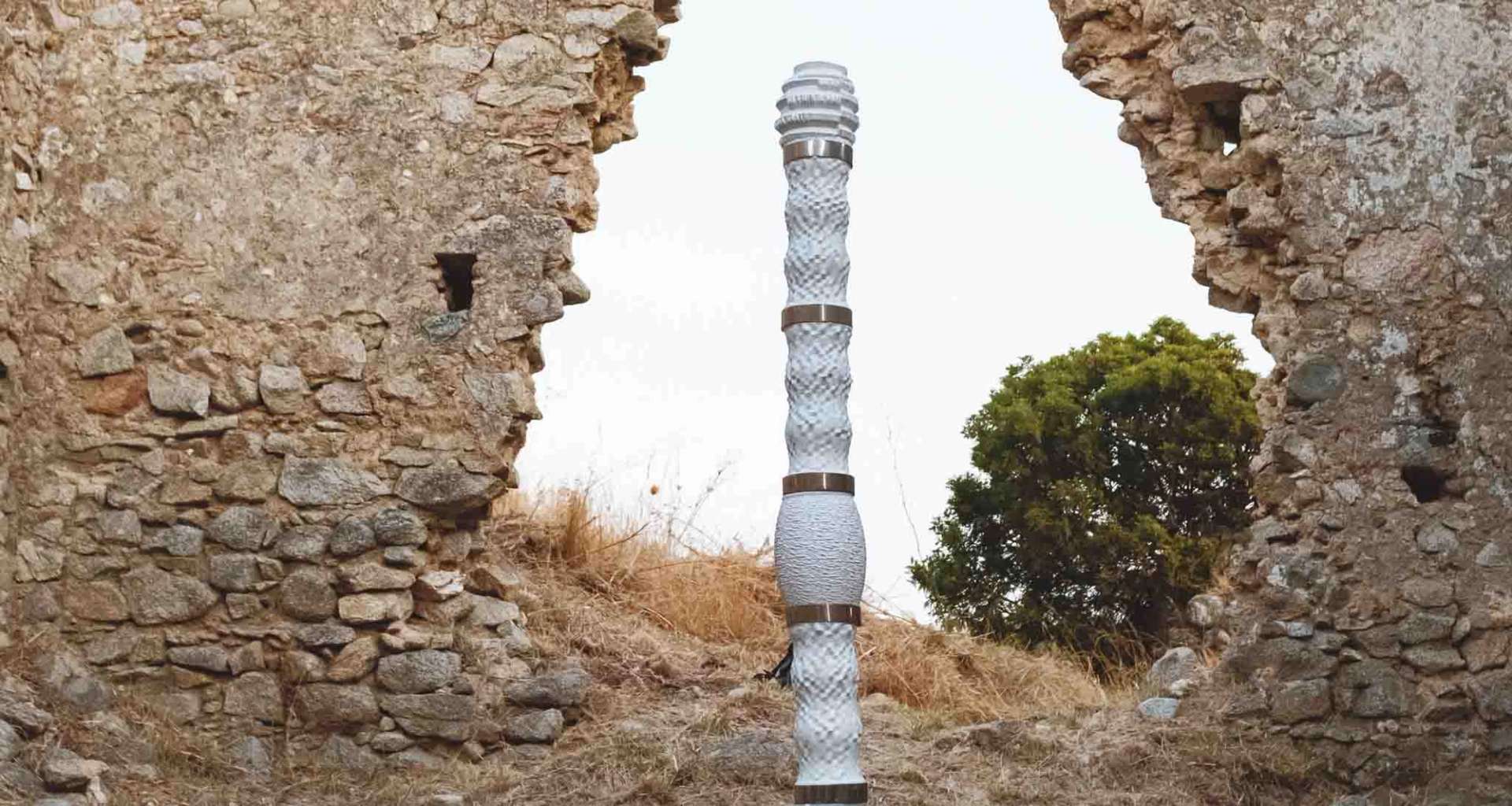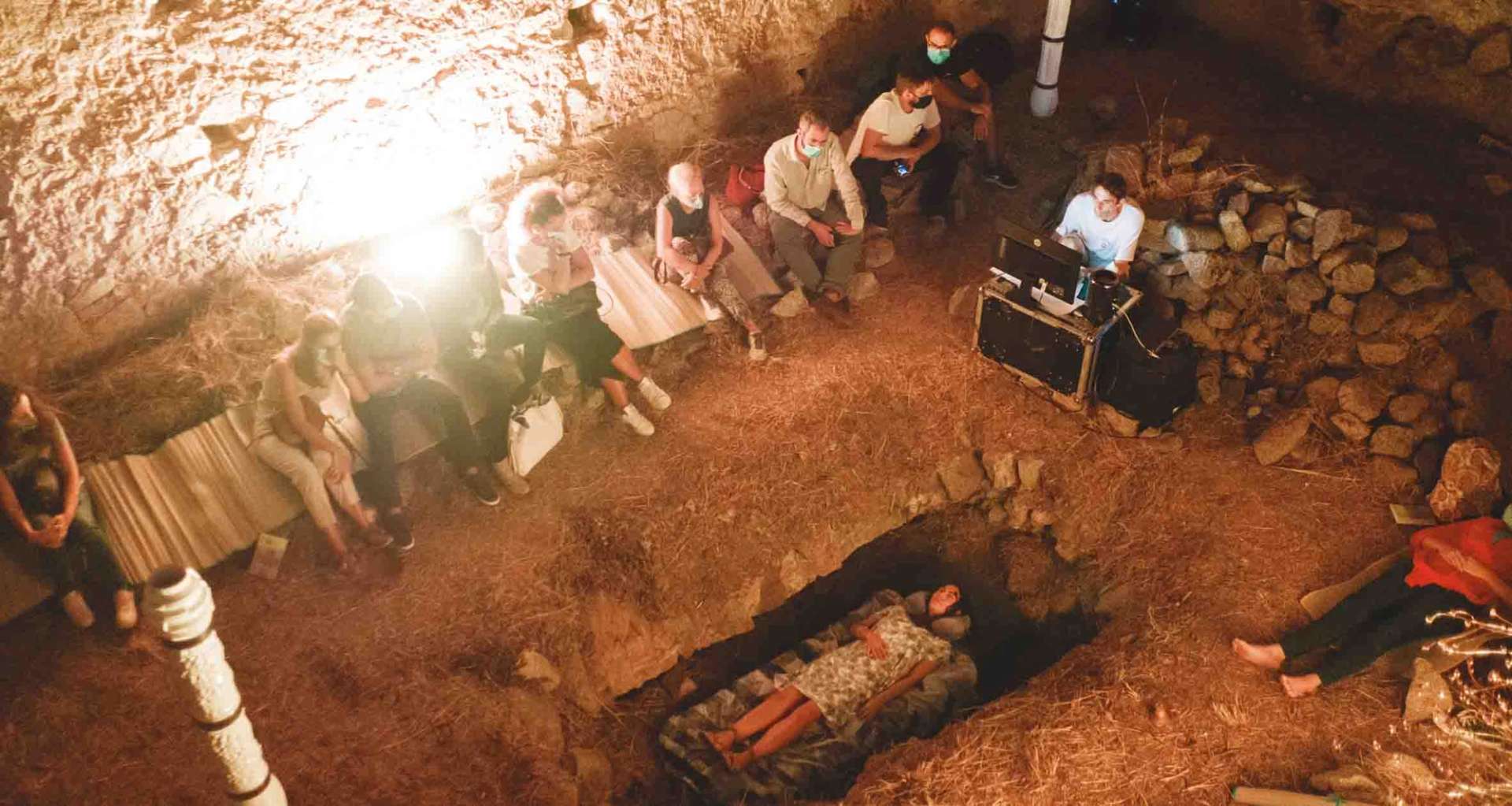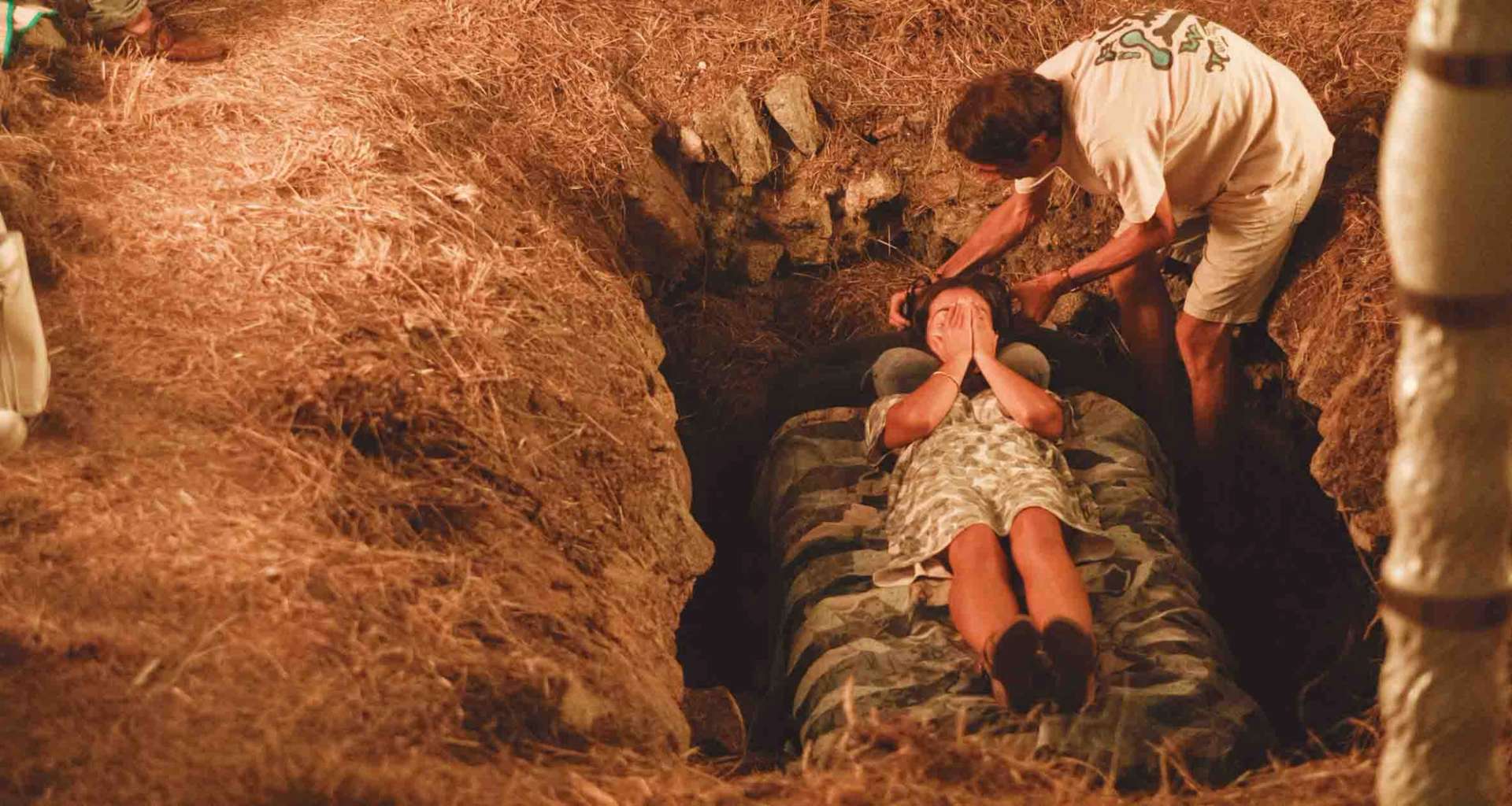The installation of the artist Matteo Nasini in the ruins of Soverato Vecchia draws inspiration from the rite of incubation, an ancestral practice widespread in ancient Greece and in most ancient cultures. The rite of incubation is the act of sleeping in a sacred place, and the dream lived in the night is the divine response to rely on. This ancient spiritual practice involving the oneiric dimension lives again today in a secular and artistic form in the installation and performance Sparkling Matter. Matteo Nasini transforms the brain waves generated during the REM phase into sculptural solids and automatic sound compositions through a technology capable of translating the electrical activity of our brain into shapes and sounds. The sculptures arranged inside the ruin, similar to the lines on columns, are the result of a transposition of the data recorded during the REM phases into geometric shapes, printed in three-dimensional ceramics through a digital process. A performer will be asleep and connected to an encephalograph. During his sleep, it will be possible to listen to the transformation of brain impulses into different sounds and harmonies, dictated by the phases of sleep in real time.
IN "SPARKLING MATTER", WHAT WE PERCEIVE THROUGH SOUND AND MATTER IS A TEMPORAL NARRATIVE OF AN INTIMATE AND SECRET ACTIVITY, CAPABLE OF CREATING A PORTRAIT, OR AN IMITATION, OF OUR THOUGHT
The artistic research of Matteo Nasini (Rome, 1976) starts from the study of sound, to then materialize in physical forms that analyze in depth and observe the surface of sound and plastic matter. The result is a practice that manifests itself methodologically in sound installations, performances, textile works and sculptures.
THE INSTALLATION OF THE ARTIST MATTEO NASINI IN THE RUINS OF SOVERATO VECCHIA DRAWS INSPIRATION FROM THE RITE OF INCUBATION. THIS ANCIENT SPIRITUAL PRACTICE INVOLVING THE ONEIRIC DIMENSION LIVES AGAIN TODAY IN A SECULAR AND ARTISTIC FORM IN THE INSTALLATION AND PERFORMANCE "SPARKLING MATTER"
The archaeological site of Soverato Vecchia is particularly evocative: steeped in silence, surrounded by hills, facing the sea. The village of Suberatum, which tradition reports with the name of “Suvaratu u Vecchiu”, stands on a hill about 1300 meters from the coastline. The highest point of the town is marked by the church of Santa Caterina d’Alessandria, located close to the boundary wall on the northern edge. A single nave is also the church Matrice, which retains almost intact the southern side supported by a barbican as a support of reinforcement.
The residential nucleus was abandoned following the earthquake of 1783: walking up its steep climbs you can admire the vestiges of a past shrouded in uncertainty. Few are the fragments of life that have come down to us: the stones and materials that make up buildings now evanescent and partly destroyed, but which retain the ability to tell centuries of history, life, work, and disasters speak for themselves
